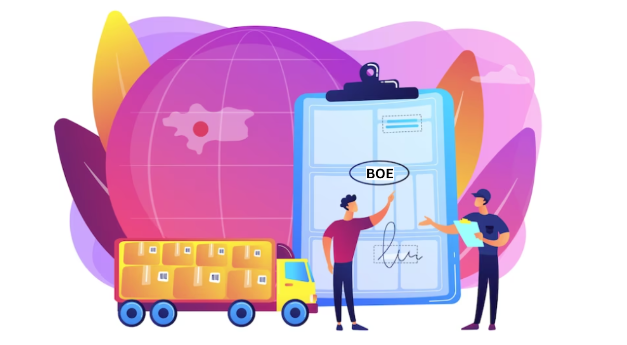The exporter issues a negotiable instrument called a Bill of Exchange to the importer. This article will teach you all you need to know about the Bill of Exchange in global trade, including how to fill it out, what it looks like, and what it’s good for.
Paperwork is a crucial component of worldwide trade, as it facilitates the shipment of goods and the transfer of funds. There is a handful of export paperwork that must accompany every cargo leaving India. These documents vary depending on the country of origin, the country of delivery, the kind of shipment, and the commodities being shipped. A Bill of Exchange is valuable export paperwork that acts as a negotiable instrument.
To begin, let’s define a Bill of Exchange.
Information about the export order, such as the buyer’s invoice value, the due date for payment, the beneficiary’s bank information, and so on, are all included in a Bill of Exchange, a crucial instrument in the shipping process. As a medium of exchange in international trade, it is widely accepted. A bank draft is a Bill of Exchange issued by a financial institution. A trade draft is a draft that an individual gives. For example, Person A exports Items to Person B for three months on INR 10,000 Credit. Bill of Exchange for INR 10,000 drawn by ‘A’ in favour of ‘B’ and payable after a specified length of time. In the stages, before it is officially approved by ‘B,’ it is referred to as a draft. The document is now a Bill of Exchange if ‘B’ signs and writes the word ‘accepted.’
Different Forms Of Bill Of Exchange
Bills of Exchange come in many forms, and some of the most popular are:
- Trade Bill
The Bill of Exchange is a commercial document written by the seller and acknowledged by the buyer to facilitate a sale. - Accommodation Bill
An Accommodation Bill of Exchange is a form of mutual monetary assistance between the sender and receiver. - Documentary Bill
In the case of a Documentary Bill, the Bill of Exchange guarantees the authenticity of the underlying documents necessary to complete the deal between the purchaser and the seller. - Inland Bill
The term “Inland Bill” refers to a bill of exchange that can only be drawn or paid in the country mentioned on the front of the bill. - Clean Bill
A “Clean Bill” does not require any additional shipping documentation to be shipped. - Supply Bill
To supply the agreed-upon products, the provider or supplier will withdraw a Supply Bill.
Bill of Exchange Structure
The following are examples of what information can be found in a Bill of Exchange:
In a bill, it is customary to include the following information: the maker’s name and signature, the maker’s address, the name of the person to whom payment is due, the date of payment, and the date payments were made.
Where can a Bill of Exchange be applied in the international trade sector?
- Long-term business deals can be harmed by the ever-changing exchange rate.
- Exporters can rest assured that they will be paid the agreed-upon amount thanks to the security provided by a Bill of Exchange.
- The financial demands of the parties can be met, and the national income per person can be increased, all with the help of a Bill of Exchange.
When preparing a Bill of Exchange, what should an exporter keep in mind?
Typically, there are three parties involved in a bill of exchange:
Drawee: Whoever makes the payment
Someone or something that gets money as a “payee.”
Whoever forces the payee to pay the drawee is known as the “drawer.”
A Bill of Exchange is a kind of payment that can be drawn by any exporter expecting payment from a buyer or importer. Concerning the aforementioned hypothetical Bill of Exchange for an export transaction between A and B, A would function as the drawer and B would act as the drawee.
The acquisition of a Bill of Exchange and the other necessary export documentation paves the way for online sales beyond India’s borders.
When you use Amazon Global Selling, exporting your online store is a breeze.
Amazon Global Selling is an e-commerce export platform that enables Indian sellers and MSMEs to export their goods to 18 foreign marketplaces in over 200+ countries and territories outside of India. Amazon’s easy online application and streamlined logistical support allow you to easily connect with customers all around the world without the expense and inconvenience of opening a foreign store or warehouse.
Register today.



